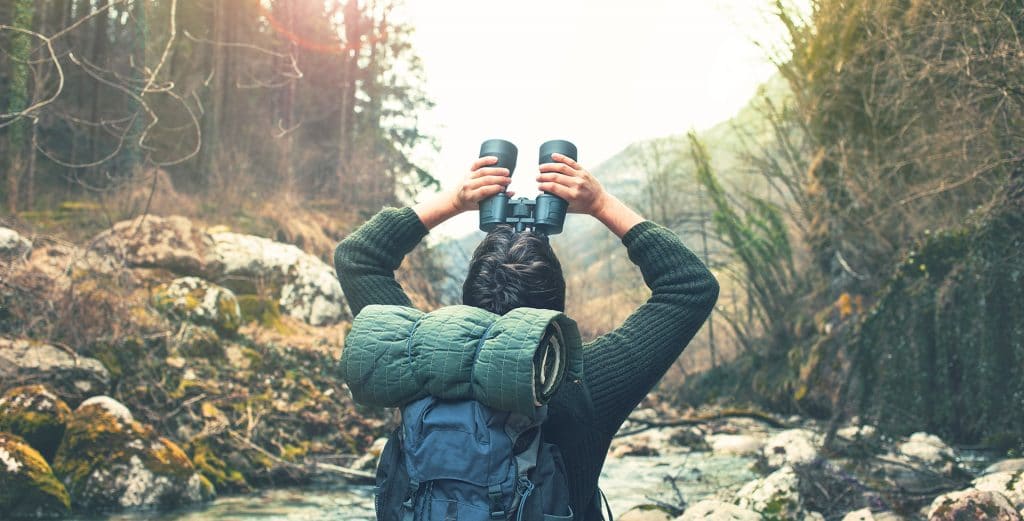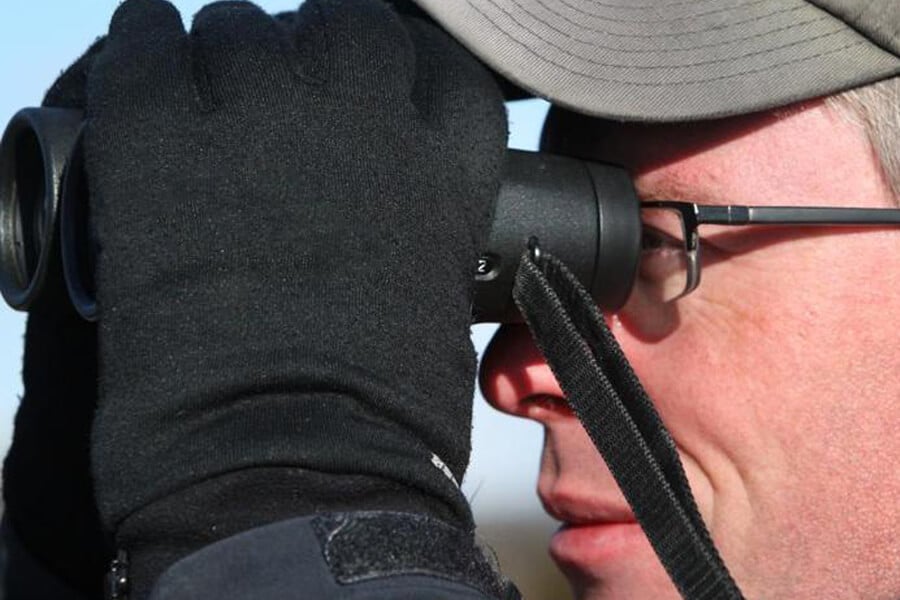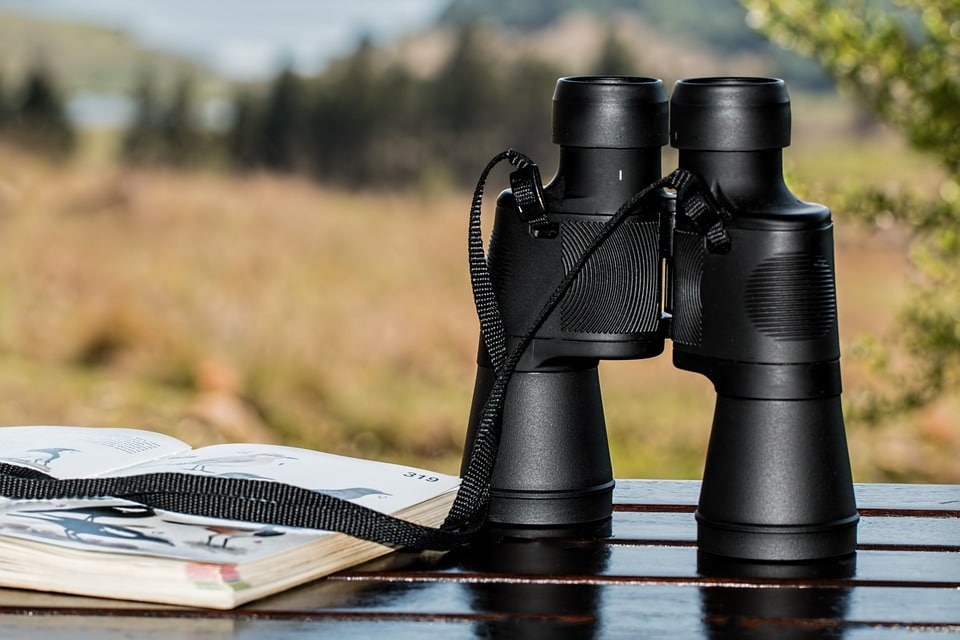

When it comes to nocturnal activities, the more night vision capability you have within your kit box, the more successful you’re going to be, the safer you’re going to stay, and the more fun you’re going to have. A very important part of being able to view wider fields of vision at night, is selecting the best thermal binoculars for your own specific activity type.
There’s a vast array of types and devices out there, for varying costs and with differing designs and functions. We’re going to take a quick look at all that in this article, and really try to narrow down to the 3 best devices we could find. The Pulsar PL77411 Accolade XQ38 Thermal Binoculars turned out to be our Editor’s Choice. We’ll take a look at the way these things work and at the important considerations to watch out for when choosing the ideal thermal binoculars for you.
Extra features: picture-in-picture (PIP) zoom, connects to smartphone via Stream Vision app, 8 custom color modes This is a great option of you want to spend a little less money and your scope of use can accommodate the slightly reduced capabilities. You’ll save much cash. The Pulsar PL77411 Accolade XQ38 offers a lower range of magnification than our other two picks, but this wouldn’t necessarily be a factor at shorter ranges, so it could be a great buy for someone using these binoculars at closer quarters. You get most of the same functionality in terms of video and picture output as you do with the best thermal binoculars here, and it’s not short on features in general. An AMOLED display renders nice, clear images and you still retain the Picture-in-Picture feature on the XQ38, which is such a great option to go to when trying to identify targets at mid to longer ranges. It’s an impressive feature to see on a binocular in this price range. A massive factor here, and another very impressive inclusion on a device that sits relatively low on the scale of cost, is that you get quick release interchangeable battery packs, which is one of the features that was such a positive on our top pick on this list. In short, you get a pretty impressive bundle of features and options with the Pulsar PL77411 Accolade XQ38, and although the features are watered down slightly in terms of the level of performance you’re going to experience, that’s fairly reflected in the price. This is another case where it’s well worth taking a view on how you’re going to be using the binoculars and working out whether you can take the hit in terms of performance, because if you can, you’re going to be spending way less dollars.Quick Summary
Top 3 Thermal Binoculars Review 2024
Pulsar PL77411 Accolade XQ38 Thermal Binoculars
Extra features: picture-in-picture zoom (PIP), connects to smartphone via Stream Vision app
You get 640 x 480 resolution with the accolade XP50 thermal binoculars, and that will ensure you get a nice crisp image of your target, at greater distances and whilst enjoying a wider field of vision. These binoculars will enable great performance in both day and night time applications, and you get a good level of waterproofing so that you’ll be able to enjoy the benefits in a range of weather conditions without worrying about damage to the internals. The XP50 incorporates two different zooming options. Incremental is great for observing quickly and easily while maintaining good focus and clarity, whilst the smooth zooming mode will work great when you’ve got more time to fiddle. These binoculars operate at 50 Hz frequency, so you get a high refresh rate of the image you’re observing, reducing jumping and improving your experience. Video and picture capture and streaming is also a function you get with the XP50, so showing off later, or indeed as you shoot, is no problem. You get a range finder, and you get a picture-in-picture function, which is absolutely invaluable for good target identification. Great feature for hunting at longer ranges. One of the nicest features on the XP50 is probably the interchangeable battery packs, which are li-ion and the mechanism is quick release, so you won’t miss much when power runs down. Overall, this is a great unit for all sorts of applications, in all sorts of weather. The unit is rugged and fully waterproof, and the quality is second-to-none. Worth the investment for a wide range of people and applications.
Extra features: waterproof, internal memory, USB output, anti-reflective coated optics
This is also a great pair of thermal binoculars. The N-Vision Optics Thermal imaging binocular offers much of the specification of our top pick here, equaling that in terms of magnification an offering a 1.25-mile detection range of person-sized targets. The reason this unit doesn’t make the top of the list is that it’s slightly inferior when it comes to batteries and the ease at which you can change them. This doesn’t offer the quick release and change capabilities of our winner here, and that’s going to affect the experience you have while using these binoculars in the field, especially at crucial moments. You do get an improved frequency image here, though. The N-Vison Optics unit operates at 60 Hz, and that’s going to give you smoother image quality and better video capture, if that’s your thing. You can record that video or pictures via a USB port. You don’t get the handy zooming options of our top pick with these binoculars, but you do get the same level of waterproofing and therefore the option to use them in all weathers, and this device is generally well received when it comes to durability in the field, so no problems there. All in all, there’s not too much to separate the two top units here and it’s definitely a case of what priorities you’ve got and how you’ll be intending to use your device when you’re out at night.
What makes a pair of good thermal imaging binoculars? In this buying guide, we’ll guide you through the key features you need to look out for when choosing the best thermal binoculars for your needs.
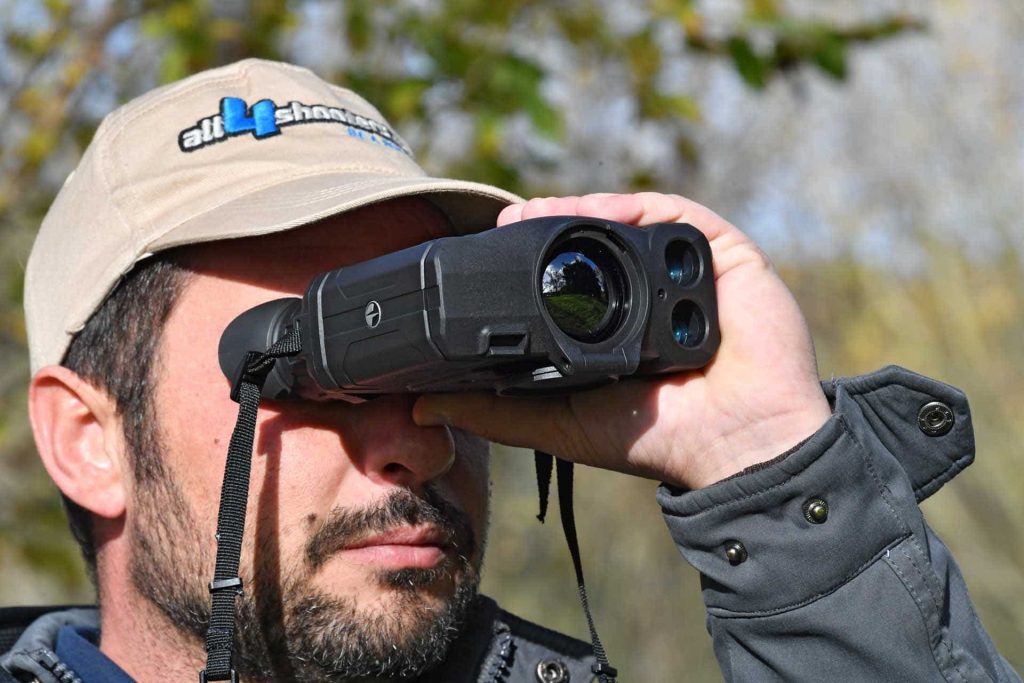
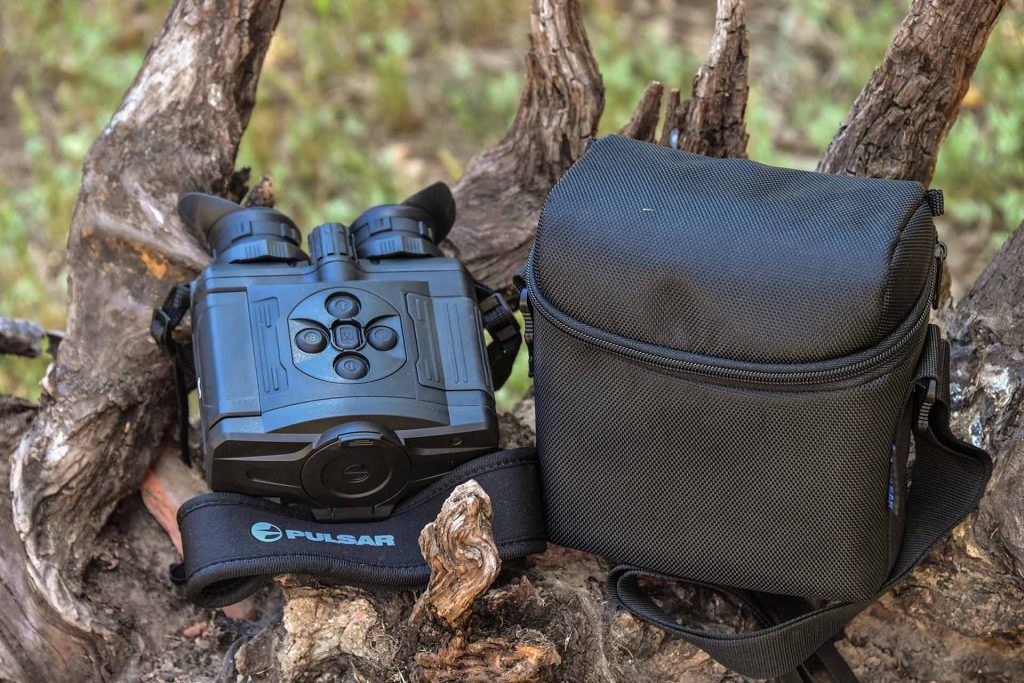
You’ll need to consider the aperture size when you’re assessing the resolution capabilities of binoculars, much the same as with any other optical device. Resolution will be directly linked to how big the aperture is, and this can be a major factor – especially if you intend to observe long range targets. This is one of the features that will probably suffer on cheaper units, and you’ll really need to be careful so as not to go so low in terms of budget to make the device unusable for the applications that you require it for. If you’re needing to identify targets reliably at longer distances – and that can be a safety concern when out hunting at night – then you’ll absolutely going to want to be in possession of a binocular that will afford you a decent enough level of resolution so as to be able to discern the difference between a hog or a deer, and a fellow hunter, before you go to the rifle. When you’re looking for a piece of equipment that you need to be able to scan a wider field of vision reliably, resolution is a priority.
Detection range can basically be defined as the ability your thermal binoculars have to clearly define a target at a specific distance, or distances. This is another instance where you’ll need to have a very clear idea of what you tend to do when you’re out in the field. Some units will be geared up for shorter distance observation, some for mid-range operations, and others will be engineered to scan at much longer distances. So, you’ll benefit greatly from having a good think about, and a very clear idea of how you’re going to be using your new thermal binoculars when you’re out at night. You’ll pay good money to get capability you don’t need unless you do this, so it’s well worth the effort and time to sit down and think before you select.
Magnification is another feature that, as it improves, will greatly increase the cost of the thermal binoculars you’re considering.
It’s vitally important, therefore, to not buy binoculars with massive amounts of built in magnification if say, you’re only ever going to use them in the forest or at shorter distances.
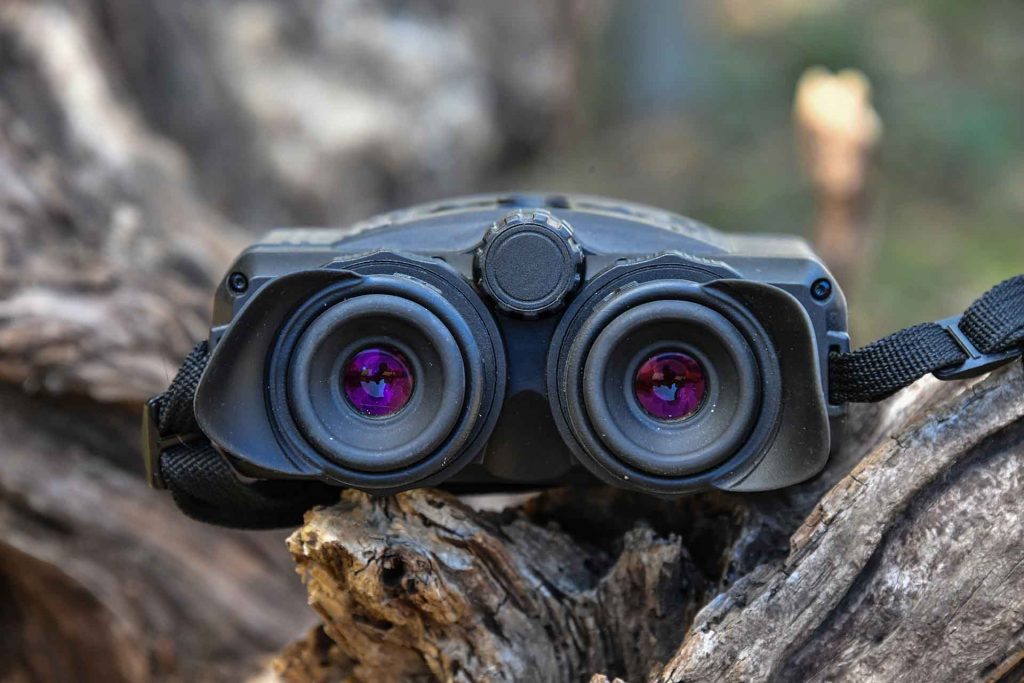
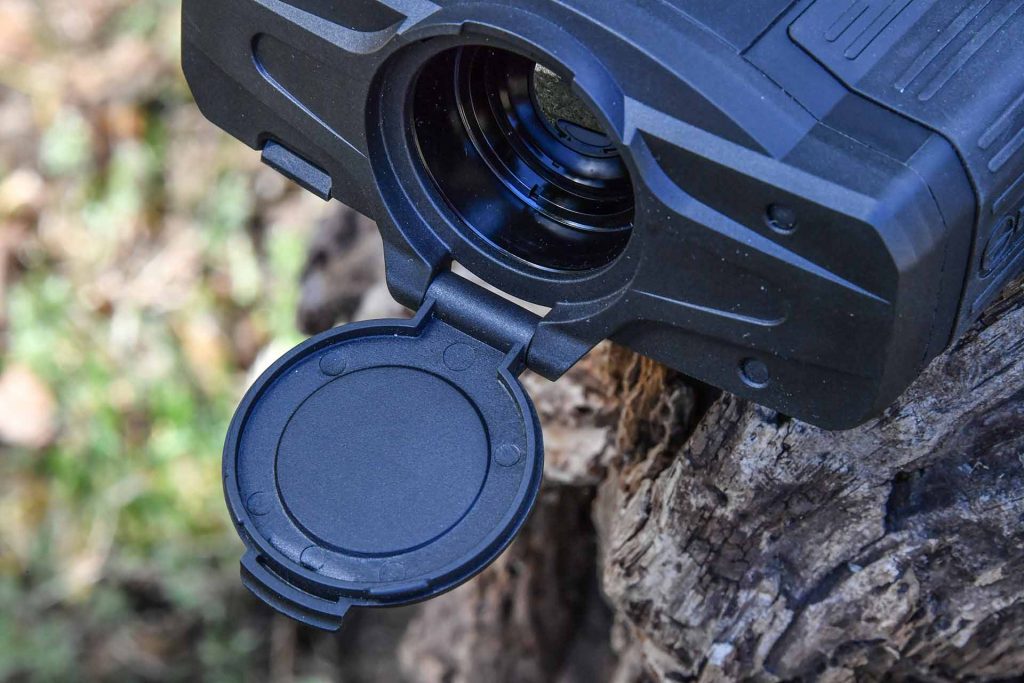
This feature will be a consideration if you want to capture images and videos during use. If you’re putting together a movie of a hunt or you just want to observe and record wildlife, or something else that you happen on accidentally while you’re out in the field, then these features will allow you to do that digitally so that you can view back and edit footage later.
You’ll need to consider how you’re likely to be using the binoculars when you take this factor into account. If you’re largely stationary while you use them to surveil targets, then rugged design isn’t as important as if you’re the type that is likely to be moving around fast, through more difficult terrain. Anything that is going to get used outside at night needs to have some built in durability, but like anything else, take into account how you intend to use the equipment when you buy.
As with durability, this is going to depend on your own particular brand of use.
If you’re often out hunting at night in bad weather, or you tend to be dashing around in creeks and rivers, then you’ll need to prioritize waterproofing.
Well, there you have it. We looked at three great thermal binoculars in this review and buying guide and the one that emerged victorious was the Pulsar PL77411 Accolade XQ38 Thermal Binocular, which is basically the little brother of our second pick and combines much of the same features at slightly reduced levels of performance, to turn out a great budget option that’s perhaps best suited to shorter range use. That binocular was closely followed in second place by the Pulsar Accolade XP50 Thermal Night Vision Binocular. This unit combines ruggedness and waterproofing, with great usable features and the ability to live-stream and record videos and pictures. One of the best features here was the interchangeable quick release battery packs – amazingly handy in the field. Last but not least by any means, came the N-Vision Optics Atlas Thermal Imaging Binocular, and although that featured some brilliant options, and indeed exceeded the frequency of operation of the top pick, it isn’t quite as effortless to use in the field. At the end of the day – which is when you’re mostly going to be using these devices – we’ve got a good choice of three units here, that’ll all get you out in the dark and having fun. So why are you still here? Grab a binocular and get going!

